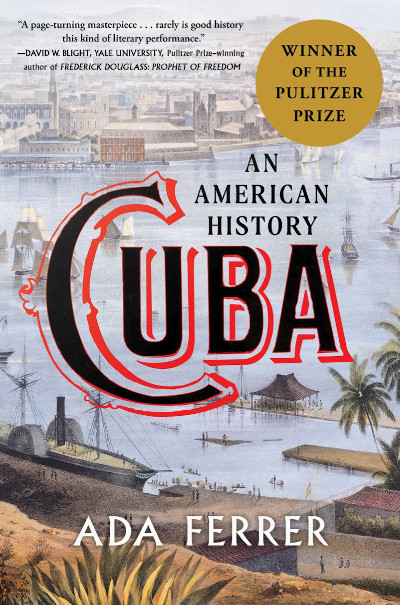In the picture
Cover of Ada Ferrer's book 'Cuba. An American History' (New York: Scribner, 2021), 560 pp.
The book by Ada Ferrer, professor of Latin American and Caribbean programs of study at New York University, is written especially for the American public: in her explanation of the history of Cuba, she focuses mainly on the aspects that may interest the reader in the United States, seeking links that keep the reader's attention throughout the reading and shedding research light on a relationship sustained over time that historiography has not sufficiently dealt with. Beyond histories of Cuba written in Spanish, more complete and comprehensive, the United States has insisted on the episodes that followed the sinking of the Maine -from then until today-, with a more abundant literature in relation to the missile crisis and other vicissitudes of the Kennedy presidency.
Ferrer, born in Cuba and raised in the United States (she writes in exquisite English, with literary taste), has been interested in that which, since the dawn of Spanish colonization in the western hemisphere, has placed the largest of the Antilles at contact with the power that was being developed in the north, barely a hundred kilometers away (initially more, since Florida was Spanish until 1821).
Among the aspects the author delves into is the interest the United States had in incorporating the island into its territory. The perception in Washington's political world throughout the 19th century was so unanimous about Cuba's gravitation towards the Union that it is strange that once Spain was expelled from Havana, the Americans did not keep it as a dominion, as they did with Puerto Rico. Perhaps, the book points out, the geographic proximity and the influence of the financial power of the North was such that it was thought that an incorporation was unnecessary. Fidel Castro was in charge of showing how wrong this calculation was.
Mexico had already attempted to annex Cuba when the Viceroyalty of New Spain became first an independent Mexican empire and shortly thereafter a republic. With the purpose to prevent Spain from continuing in the Caribbean once all Spanish possessions on the continent consummated their independence in the 1820s, Mexico harbored the illusion of expanding eastward, seeing Cuba's geography as an extension of that of the Yucatan, albeit richer and more strategic, extending the country's control over the Gulf of Mexico to the Caribbean. Mexican authorities saw in Cuba "a great storeroom and shipyard created by nature for our use".
This idea that Cuba was "naturally" ready to be taken permeated U.S. foreign policy at the time. Ada Ferrer reports the testimonies of Thomas Jefferson and above all of John Quincy Adams, who referred to the island as the ripe fruit that by the law of gravity would fall into the U.S. basket. It did not respond to a simple expansionist inertia, but rather the incorporation of Cuba was conceived at the time as a geopolitical imperative, essential for the nation itself. "The annexation of Cuba to our federal republic will be indispensable to the continuance and integrity of the Union itself," Adams wrote.
What is striking is that, despite seeing Cuba in this way, Washington finally let it escape: either it was not so vital for the survival of the United States, or the great power thought that a quasi-protectorate like the one known under Fulgencio Batista was enough to exercise the same control. It should be pointed out, in any case, that Washington secured sovereignty over Guantanamo, from agreement with the previous designs of the strategist Alfred T. Mahan: two access points to the Caribbean were fundamental for the United States, the one that runs east of Cuba (Guantanamo) and the one that passes east of Puerto Rico (and there the Americans placed their other large military base).
Ada Ferrer's work combines the tracing of the historical line with elements of intrahistory: many names and surnames of "little" people that fill the story with liveliness, making it attractive and three-dimensional.
To a reader from Spain, however, certain pages may provoke moments of slight perplexity, as it is surprising to see that the author distances herself from the Spanish heritage she has received through her Cuban heritage, to embrace instead the more superfluous relationship maintained throughout history between Washington and Havana. But the reality of many of the Cuban exiles in the United States is that symbiosis between their family memories of the island and their experiences as second, third or fourth generations on U.S. soil.

